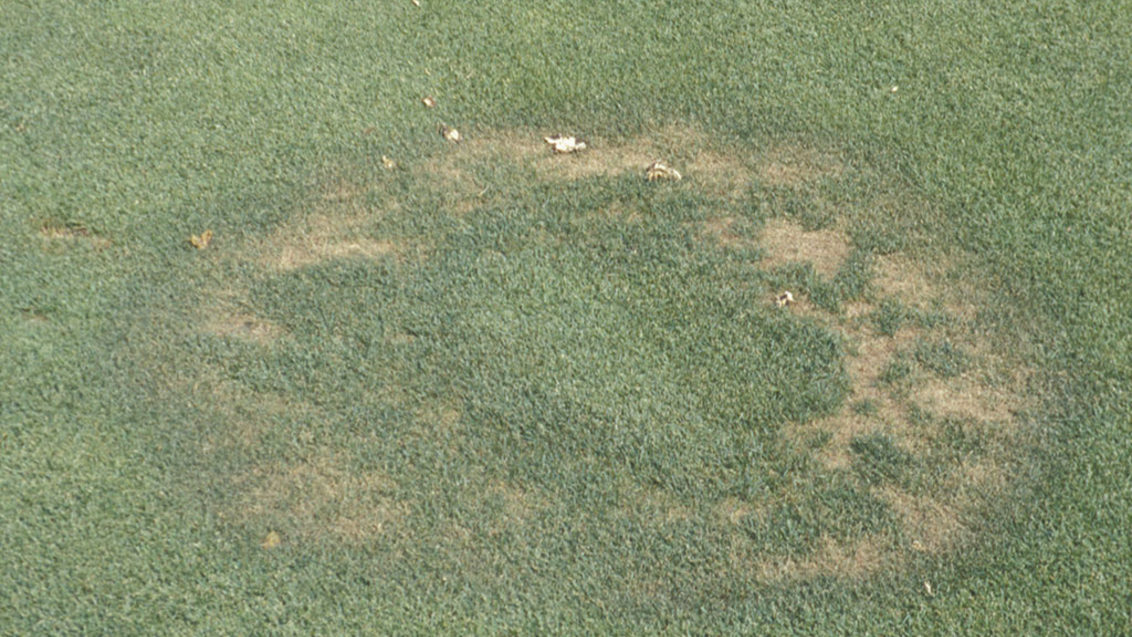Fairy Ring
Basidiomycetes in the order Agraricales are capable of causing fairy rings
Turf Diseases
Susceptible Turf
Occurs in all turfgrasses.
Symptoms
- Symptoms vary with causal agents (fungal species).
- Circular or arc shaped rings of darker or faster-growing turf appears in moist turf.
- A concentric ring of dead grass may develop inside the circle of lush grass.
- The size of the rings can vary.
- Activity in the turf stops when the individual rings come into contact with each other.
- Mushrooms or toadstools may be produced in the outer ring of lush growth.
- As mycelium grows the soil becomes hydrophobic.
- In a mature Fairy Ring, the outer ring of lush grass may be missing, leaving an outer ring of plant death and an inner ring of green turf.
Conditions Favouring Disease
- Fairy Rings are more severe on light soils, which have low fertility and low moisture content.
- Turf with a significant thatch layer.
- Drier areas have significantly more Fairy Rings than higher rainfall areas.
Management Tips
- Avoid using root zone mixes with high levels of undecomposed organic materials.
- Reduce thatch by vertical cutting.
- Core aerify.
- Irrigate deeply.
- Use nitrogen and iron fertilisers to mask symptoms on some types of Fairy Ring.
- Use soil wetting agents to help penetrate hydrophobic areas.
General Comments
Fairy Rings are more prevalent and damaging on lightly water and fertilised fairways and lawns than on well irrigated and fertilised turf.
Fairy Rings typically occur in spring and summer, however they can also occur on cool-season turfgrass in mild winter climates.
The most common Basidiomycetes in Australia are species of Lycoperdon; Marasmius; Tricholoma; however there are over 50 causal organisms.

